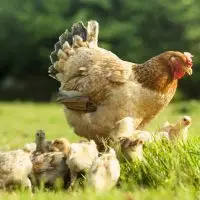Cracked Supply: Why Localised Egg Production Could Be Australia’s Best Bet

Cracked Supply: Why Localised Egg Production Could Be Australia’s Best Bet
Australia is currently facing a significant egg shortage. The culprit? Outbreaks of avian influenza have hit several large-scale egg farms, leading to the culling of over 2.4 million hens—more than 10% of the national laying flock. Supermarkets are rationing eggs, prices are soaring, and consumers are feeling the pinch. But beyond the immediate disruption lies a deeper question: Is our reliance on centralised, mass-production egg farms a systemic weakness? And could a shift toward more localised, decentralised egg production improve Australia’s food security and resilience?
What’s Happening With Eggs in Australia?
Most of the recent outbreaks have impacted free-range commercial farms. While free-range eggs are in high demand for their animal welfare benefits, the open environments make them more susceptible to infections from wild birds—particularly avian influenza. The very feature that consumers favour (outdoor access) has become a vector for disease transmission. With major operations down, prices for some brands have surpassed $1 per egg.
The Risks of Large-Scale Production
Mass egg production comes with efficiency benefits and lower per-unit costs, but it also presents significant systemic risks:
Disease spread: When outbreaks occur, the scale of operations means huge numbers of birds must be culled.
Supply chain vulnerability: Disruption at a few key facilities affects the entire nation.
Biosecurity complexity: The larger and more interconnected the farm, the harder it is to isolate and contain pathogens.
The Case for Localisation
Smaller, decentralised farms and even backyard operations could help build a more resilient food system:
1. Improved Food Security
With more distributed sources of production, supply becomes less sensitive to isolated disruptions. If one local flock is affected, others can continue supplying nearby communities.
2. Easier Biosecurity
Paradoxically, smaller flocks may be easier to protect. Limited entry, defined areas, and less throughput reduce the risk of widespread infection. Local authorities can more easily monitor and contain outbreaks at the community level.
3. Community Empowerment
Backyard chickens and smallholdings can supplement food budgets, provide educational experiences, and create a sense of agency in food production.
Is There Room for Both?
Absolutely. Large-scale producers play an essential role in feeding the nation, especially for urban centres. But a resilient food system doesn’t rely solely on them. Much like decentralised energy production (e.g., rooftop solar), decentralised egg production can complement central supply chains. The key is diversity in sourcing.
What About the Supply Chain?
A shift to localised production may stress other parts of the system, particularly feed and fodder supplies. However, this too can be mitigated:
DIY Chicken Fodder: Sprouting grains like barley or wheat creates high-nutrient feed. It’s low-cost, space-efficient, and reduces reliance on commercial feed.
Local Grain Co-ops: Communities could pool resources to bulk-buy or grow feed inputs.
Protecting Against Avian Influenza at Home
While backyard flocks are not immune to disease, owners can take proactive measures:
Keep birds enclosed to avoid wild bird contact.
Use footbaths and clean gear before entering enclosures.
Isolate new or sick birds.
Report sudden deaths to biosecurity authorities.
Avoid flock visits by outside poultry keepers.
Resources like Farm Biosecurity Australia and state agriculture departments offer detailed guides for backyard poultry owners.
Nutritional Benefits: Free-Range vs. Cage Eggs
Multiple studies suggest free-range eggs often contain more omega-3 fatty acids, vitamin A, and vitamin E than caged alternatives, due to hens having access to a more varied diet and sunlight exposure. However, the differences can be modest and are influenced by feed quality, freshness, and handling.
The Role of Households
Many Australians are already responding by setting up their own backyard flocks. Sales of point-of-lay hens are booming, and community groups are swapping advice, fertilised eggs, and coop plans. While not everyone can keep chickens, those with suitable property can provide for their household—and potentially a circle of neighbours or customers.
Final Thoughts
The avian flu crisis has exposed the fragility of Australia’s centralised egg production. By encouraging a mix of large, small, and household producers—and providing support for biosecurity and feed systems—we can build a more adaptable, sustainable, and community-driven model for egg supply.
Further Reading and Resources:
YouTube: "Why Are Egg Prices So High in Australia?" – ABC News Australia

